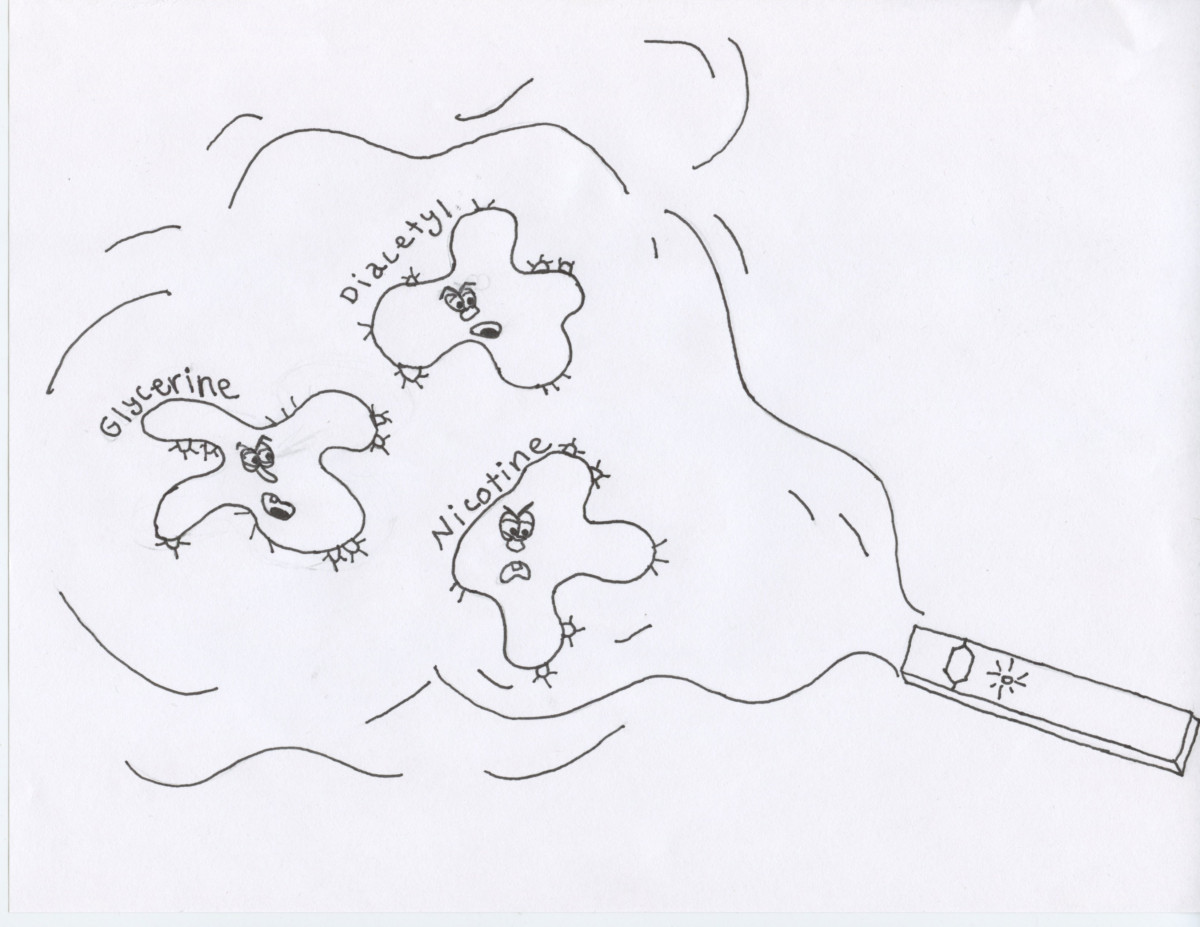Jack Harrison, Reporter
@jhcourant
On October 4 2019, Connecticut reported its first vaping-related death. A patient in their 30s died while hospitalized for several medical conditions, including blood clotting throughout their bloodstream and difficulty breathing. The incident marked the 25th case in the state, and the 1,080th case across the nation.
According to a study from the Safety and Health Magazine, more than 37% of teenagers reported vaping within the past 12 months. With teenagers leading the charge, this epidemic is increasing at a rate that medical professionals have never seen before, even compared to cigarette smoking.
Vaping first appeared in the United States in 2007, said NCPS District Nursing Supervisor Janet Reed. “To sit here in 2019 with all these respiratory illnesses and deaths, that truly just horrifies me.”

Though the main causes of the illnesses are still unknown to scientists, the several harmful chemicals in vapes provide many probable causes. The most dangerous of these is nicotine. “Nicotine is considered the most highly addictive substance there is, more addictive than even heroin or cocaine,” said Ms. Reed.
Nicotine is especially dangerous in teenagers. “It works in the brain, particularly a young, developing brain, on addiction and learning pathways,” said Ms. Reed.
Among the 30+ substances that make up a vape juice is diacetyl, which causes the “popcorn lung” apparent in many vape users. Formaldehyde, which is embalming fluid and sometimes used in antifreeze, is also a potent chemical in e-cigarettes.
With all of the deadly materials in vape clouds, Ms. Reed wonders why students continue to vape. An anonymous junior said it helps them to relax. “It calms me down if I’m stressed out,” they said. “Personally, I don’t feel any obvious declines in my health since I started using a Juul.” The student wasn’t worried about the recent illnesses. “I don’t use Tetrahydrocannabinol (THC) devices, so I don’t think I apply to [those affected].”
Since the teenage brain is still developing, Ms. Reed says that it is predictable that younger vapers feel this way. “Sometimes there is that feeling with young people where they think they’re invincible,” said Ms. Reed. “‘It can’t hurt me, I’ll be fine.’ That’s the thought process, but I really do not understand it.”
According to Ms. Reed, vapers are receiving THC from nicotine devices, though they might not be aware of it. “People think, ‘Oh, I’m only getting nicotine and flavorings.’ Guess what, there’s THC in it.”
The administration has made multiple additions to its curriculum to discourage its students from vaping. For example, the health curriculum now includes a unit where students collaborate with each other to create informative posters on the dangers of vaping. Class of 2021 Administrator Larry Sullivan wants students to know that the administration has good intentions. “Any behavior that would end up being unhealthy for students is a priority for us to try to stop,” he said. “The other piece for us is educating, that people understand it’s not to be punitive, but it’s because we’re worried about their wellbeing.”
Mr. Sullivan, whose parents both passed away from smoking-related illnesses, wants his students to be safe. “I want all our students to live long, healthy, productive lives, and I would just hate to see somebody get involved with something that may turn out, 5 or 10 years from now, or even right now as we’re talking, more dangerous than they initially think it is.”
Ms. Reed could not agree more. “I’ve been a nurse for 40 years,” she said. “This is something that is such a public health crisis, and in my opinion, we’ve never seen something escalate so rapidly. I beg you not to vape.”




